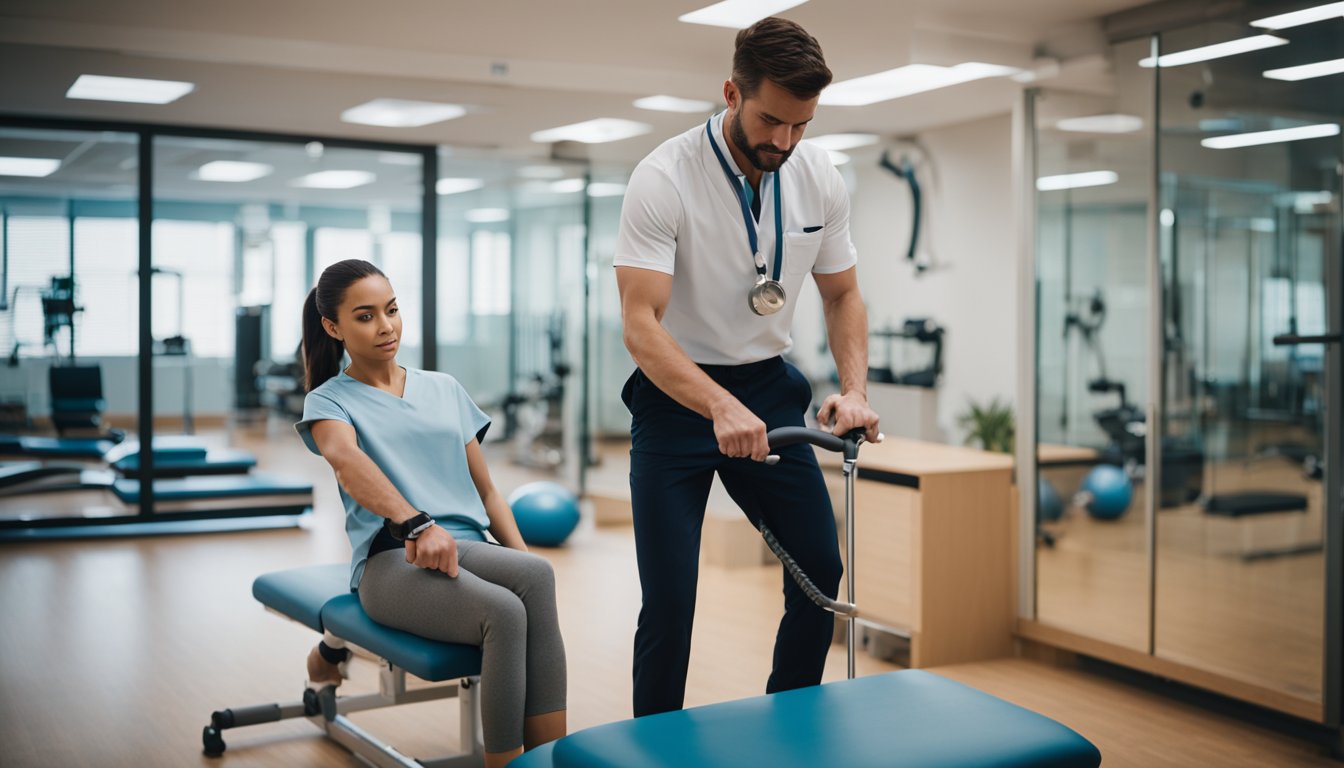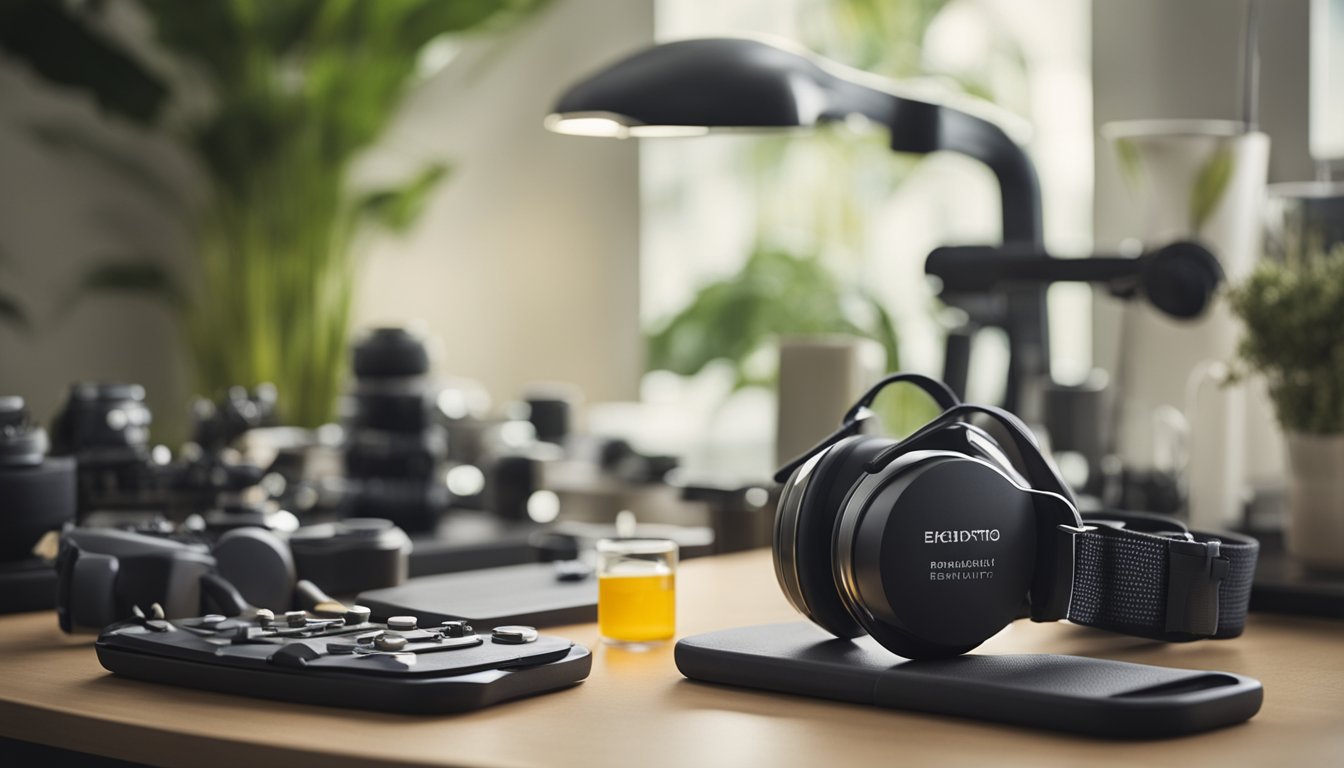Late updated: 28 Jun 2024 10:06
Written by: Ella Thompson
Latest Rehabilitation Techniques: Innovative Therapies Transforming Patient Recovery
Emerging trends in rehabilitation are reshaping how we approach recovery from injuries and medical conditions. Advances in technology are making rehabilitation more effective, efficient, and patient-centred. Incorporating game-like elements into therapy, known as gamification, is transforming monotonous exercises into engaging activities, boosting patients' motivation and adherence.

In the realm of sports medicine, the latest techniques are grounded in evidence-based practices and ongoing research. Blood flow restriction rehabilitation is proving vital in maintaining muscle strength and size during the recovery period from injuries or surgeries. This technique involves lifting lighter weights while restricting blood flow, creating significant physiological responses that aid recovery.
Innovative approaches in neurorehabilitation are improving outcomes for patients with neurological conditions. Techniques like virtual reality are being integrated into clinical practice to simulate real-life scenarios and enhance motor function and cognitive abilities. Healthcare professionals are continually refining these methods to ensure they meet the highest standards of efficacy and safety.
Key Takeaways
- Latest rehabilitation techniques are enhancing recovery and patient engagement.
- Evidence-based practices and ongoing research are crucial in sports medicine rehabilitation.
- Innovative neurorehabilitation techniques, such as virtual reality, are improving clinical outcomes.
Advancements in Neurorehabilitation
We have seen substantial progress in neurorehabilitation over recent years. The most promising developments include non-invasive brain stimulation techniques, robotics and virtual reality, and the integration of telemedicine and emerging technologies.
Non-Invasive Brain Stimulation Techniques
Non-invasive brain stimulation has emerged as a significant advancement in neurorehabilitation. Techniques like transcranial magnetic stimulation (TMS) and transcranial direct current stimulation (tDCS) are being used to promote neuroplasticity and facilitate recovery.
TMS uses magnetic fields to stimulate nerve cells in the brain, potentially improving motor functions in patients. tDCS, on the other hand, involves delivering a low electrical current to specific brain regions. These methods help enhance the brain's ability to reorganise itself, a critical factor in recovery from neurological conditions. These techniques are gaining traction due to their non-invasiveness and potential to complement traditional therapies.
Robotics and Virtual Reality
The integration of robotics and virtual reality in neurorehabilitation marks a remarkable shift. Robotic devices assist with repetitive and task-oriented movements, crucial for motor recovery. Robotic exoskeletons and robotic-assisted gait training systems are now common in rehabilitative practices.
Virtual reality (VR) creates immersive environments where patients can practice and refine their motor skills. VR therapies offer engaging and interactive sessions, increasing patient motivation and compliance. The combination of these technologies provides high-intensity training in a controlled and safe manner. Engineers and therapists work closely to develop and refine these solutions, making them more effective and accessible.
Telerehabilitation and Emerging Technologies
Telerehabilitation utilises communication technology to deliver neurorehabilitation services remotely. This approach is particularly beneficial for patients with limited access to specialised care. Through video conferencing and wearable sensors, therapists can monitor progress and provide real-time feedback.
Emerging technologies like artificial intelligence and machine learning further enhance telerehabilitation. They help in personalising treatment plans based on individual patient data. Wearable sensors track movement and physiological parameters, providing valuable insights into patient progress. This integration ensures that patients receive consistent and tailored care, regardless of their location. We are exploring these innovative methods to make rehabilitation more effective and widely available.
Therapeutic Strategies for Specific Conditions

Advancements in rehabilitation have led to tailored therapeutic strategies for various conditions. These methods focus on enhancing recovery, managing symptoms, and improving the quality of life.
Stroke-Recovery Focused Treatments
Stroke rehabilitation aims to restore as much function as possible. Key components include physical therapy to improve motor control and gait. Patients often engage in task-specific training, such as walking or arm movements, to target affected areas.
Balance and coordination exercises are crucial, often involving body-weight support systems or robotic-assisted gait training. Medications may address spasticity and improve motor function during therapy.
Managing Chronic Neurological Disorders
Multiple sclerosis (MS) and Parkinson's disease require ongoing therapeutic interventions to manage symptoms. For MS, physical therapy focuses on building strength and flexibility while addressing balance issues. Assistive devices and adaptive equipment are often utilised to maintain independence.
For Parkinson's disease, exercise regimens are tailored to improve gait, reduce rigidity, and enhance overall mobility. Speech therapy may also be necessary to address communication challenges.
Physical Interventions for Musculoskeletal Complaints
Treating chronic musculoskeletal disorders like chronic pain and spinal cord injuries involves customised physical interventions. Techniques such as manual therapy, electrotherapy, and exercise programmes target pain reduction and mobility enhancement.
Physiotherapy is critical for restoring function post-injury and managing chronic pain. Specific exercises aim to strengthen muscles, improve flexibility, and reduce symptoms associated with musculoskeletal conditions.
By adopting these targeted strategies, we can significantly impact recovery and day-to-day functioning for individuals with these complex conditions.
Frequently Asked Questions

This section addresses novel strategies, current research, and cutting-edge technologies that are shaping the field of rehabilitation.
What novel strategies are being adopted in stroke rehabilitation?
Novel strategies in stroke rehabilitation include the use of brain-computer interfaces and robotics to improve motor function. These technologies are designed to enhance neuroplasticity, thereby aiding recovery. Additionally, virtual reality (VR) is being increasingly utilised to create engaging, immersive environments for therapy.
How is current research shaping the development of new physical therapy methods?
Current research is focusing on personalised rehabilitation programmes, leveraging data analytics to tailor treatments to individual needs. Researchers are exploring the benefits of combining different therapeutic approaches, such as aerobic exercise with cognitive training, to optimise recovery outcomes. Gene therapy is also being investigated for its potential to repair and regenerate damaged tissues.
Which technologies are considered cutting-edge in the field of rehabilitation?
Some of the cutting-edge technologies in rehabilitation include exoskeletons, which assist with walking and movement, and functional electrical stimulation (FES), which helps activate muscles through electrical impulses. Wearable sensors that track patient progress in real-time are also gaining traction, providing valuable feedback to therapists and patients alike.
What recent trends in manual therapy are influencing clinical practice?
Recent trends in manual therapy include the integration of soft tissue mobilisation techniques with traditional physical therapy exercises. There is a growing emphasis on patient education, empowering individuals with self-management strategies. Myofascial release, a technique aimed at relieving tension and improving muscle function, is also becoming more prevalent in practice.
Can you identify any contentious treatments in physical therapy that are gaining attention?
Some contentious treatments in physical therapy include dry needling and craniosacral therapy. Dry needling involves inserting fine needles into trigger points to relieve muscle pain, but its efficacy is debated. Craniosacral therapy, which focuses on manipulating the skull and spine to alleviate pain, remains controversial due to limited scientific support.
What fundamental principles are driving the success of modern rehabilitation programmes?
Modern rehabilitation programmes are driven by the principles of patient-centred care, evidence-based practice, and interdisciplinary collaboration. These programmes emphasise the importance of setting realistic, measurable goals and continuously adapting treatments based on patient progress. Rehabilitation also focuses on holistic care, considering physical, emotional, and psychological aspects.
